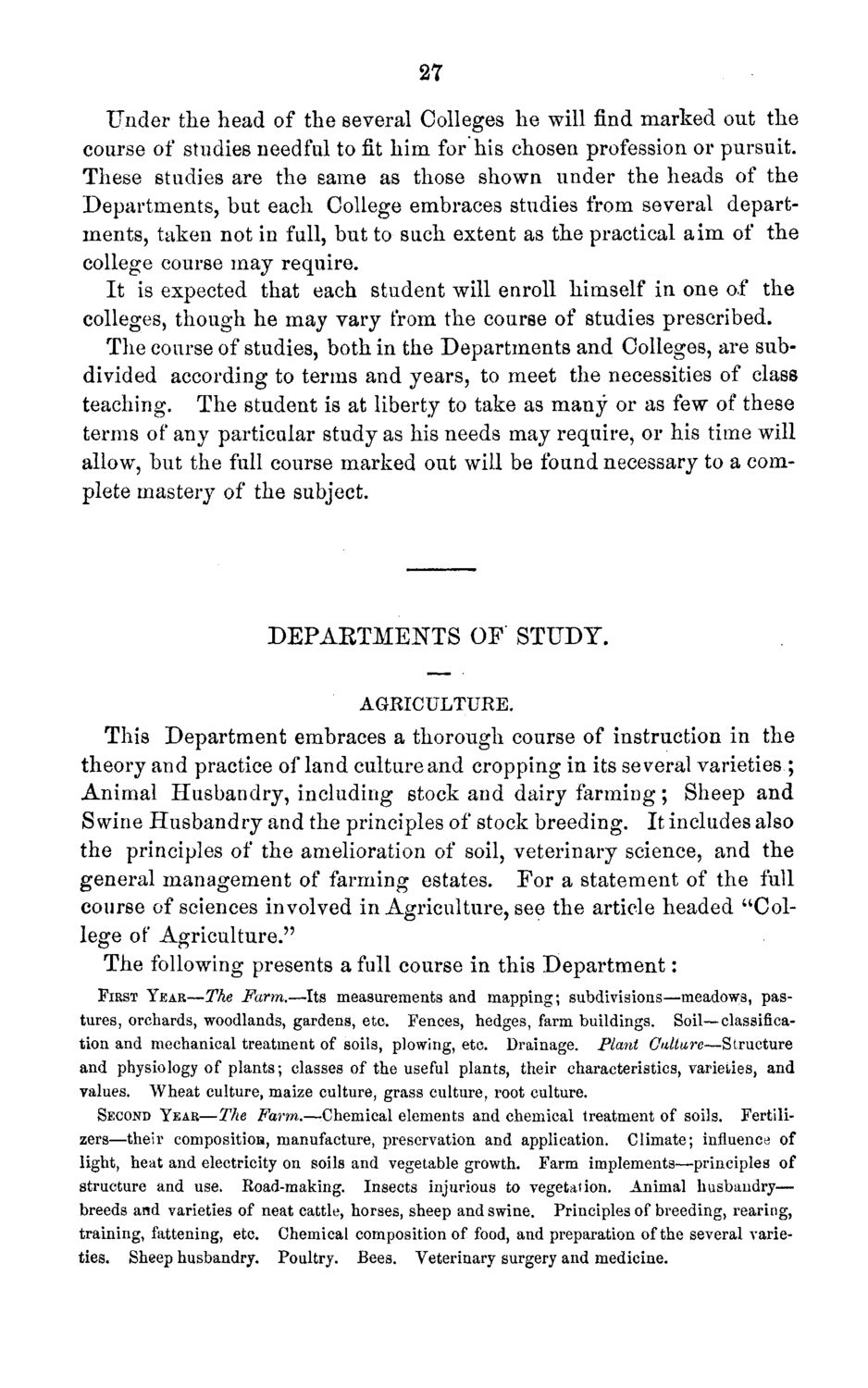| |
| |
Caption: Board of Trustees Minutes - 1871
This is a reduced-resolution page image for fast online browsing.

EXTRACTED TEXT FROM PAGE:
27 Under the head of the several Colleges he will find marked out the course of studies needful to fit him for his chosen profession or pursuit. These studies are the same as those shown under the heads of the Departments, but each College embraces studies from several departments, taken not in full, but to such extent as the practical aim of the college course may require. It is expected that each student will enroll himself in one of the colleges, though he may vary from the course of studies prescribed. The course of studies, both in the Departments and Colleges, are subdivided according to terms and years, to meet the necessities of class teaching. The student is at liberty to take as many or as few of these terms of any particular study as his needs may require, or his time will allow, but the full course marked out will be found necessary to a complete mastery of the subject. D E P A R T M E N T S OF STUDY. AGRICULTURE. This Department embraces a thorough course of instruction in the theory and practice of land culture and cropping in its several varieties ; Animal Husbandry, including stock and dairy farming; Sheep and Swine Husbandry and the principles of stock breeding. It includes also the principles of the amelioration of soil, veterinary science, and the general management of farming estates. For a statement of the full course of sciences involved in Agriculture, see the article headed "College of Agriculture." The following presents a full course in this Department: FIRST YEAR—The Farm.—Its measurements and mapping; subdivisions—meadows, pastures, orchards, woodlands, gardens, etc. Fences, hedges, farm buildings. Soil—classification and mechanical treatment of soils, plowing, etc. Drainage. Plant Culture—Structure and physiology of plants; classes of the useful plants, their characteristics, varieties, and values. Wheat culture, maize culture, grass culture, root culture. SECOND YEAR—The Farm.—Chemical elements and chemical treatment of soils. Fertilizers—their composition, manufacture, preservation and application. Climate; influence of light, heat and electricity on soils and vegetable growth. Farm implements—principles of structure and use. Road-making. Insects injurious to vegetation. Animal husbandry— breeds and varieties of neat cattle, horses, sheep and swine. Principles of breeding, rearing, training, fattening, etc. Chemical composition of food, and preparation of the several varieties. Sheep husbandry. Poultry. Bees. Veterinary surgery and medicine.
| |